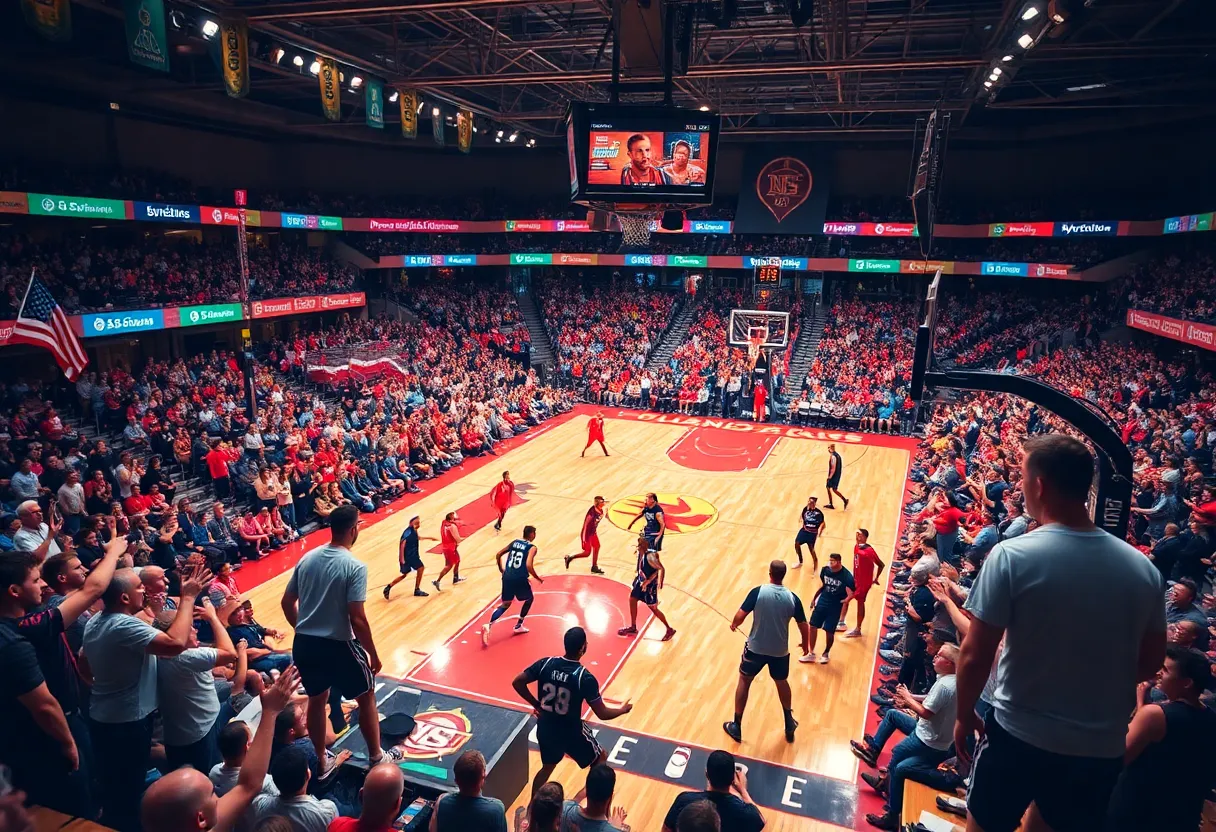Omaha, October 21, 2025
Omaha’s Business Improvement Districts (BIDs) have experienced a revitalization of local commercial zones due to focused investments in infrastructure and events. Recent updates indicate a 15% rise in foot traffic in areas such as the NoDo BID, leading to positive benefits for local retailers including boutiques and eateries. These enhancements are designed to reduce blight and improve community appeal, with economic analysts estimating potential annual returns of up to $50 million, further solidifying Omaha’s reputation as a key business corridor in the Heartland.
Omaha’s Business Districts See Boost from Targeted Investments
Omaha – Omaha’s Business Improvement Districts (BIDs) are actively revitalizing local commercial zones through focused investments in infrastructure and events. Recent developments show that these efforts have led to a 15% rise in foot traffic in areas like the NoDo BID following streetscape upgrades, directly benefiting retailers such as boutiques and eateries.
These upgrades have created more vibrant and accessible spaces, drawing in more visitors and supporting local businesses. The BIDs, now totaling five across the city, focus on reducing blight and enhancing community appeal. Economic analysts estimate that these initiatives could generate up to $50 million in annual returns, strengthening Omaha’s position as a key business corridor in the Heartland.
Supporting these efforts is a funding model based on assessments from property owners, which ensures sustainable investment without relying on general city funds. For instance, the streetscape improvements in NoDo have not only increased foot traffic but also encouraged new business openings and expansions. This approach has helped transform underutilized areas into thriving hubs, providing a blueprint for other neighborhoods.
Further details reveal that the BIDs emphasize practical enhancements, such as better lighting, pedestrian-friendly pathways, and community events that attract residents and tourists alike. These changes address common urban challenges like neglected spaces and low activity levels, fostering a more dynamic environment for commerce. Retailers in upgraded zones report higher sales and customer engagement, highlighting the direct economic benefits.
In the broader context, BIDs originated as a way for local stakeholders to collaboratively manage and improve commercial areas. In Omaha, this model has evolved over recent years, with the number of districts growing to five. Each BID tailors its strategies to specific neighborhood needs, such as targeting blight in industrial zones or promoting cultural events in retail corridors. This localized focus has contributed to overall city-wide economic growth, as evidenced by the predicted $50 million in annual returns.
Omaha’s BIDs represent a strategic response to economic challenges, leveraging community resources to drive development. By investing in infrastructure like streetscapes, these districts not only boost foot traffic but also enhance the overall quality of life for residents and visitors. This initiative underscores the city’s commitment to maintaining a vibrant business corridor in the Heartland, with potential long-term impacts on job creation and economic stability.
The success of the NoDo BID serves as a key example, where the 15% rise in foot traffic has led to noticeable improvements for local businesses. This outcome illustrates how targeted investments can yield measurable results, encouraging further expansion of similar programs. As more areas adopt these strategies, Omaha continues to build on its reputation as an innovative Midwestern city.
Economic projections from analysts point to sustained benefits, with the $50 million in annual returns expected to support ongoing projects and attract additional investment. This financial model, funded by property owner assessments, ensures that the BIDs remain self-sustaining and adaptable to changing needs. Overall, these efforts are helping Omaha adapt to modern economic demands, promoting growth in a competitive landscape.
Key Impacts of BID Initiatives
The primary impacts include increased business activity and community engagement. For example, the infrastructure upgrades have made commercial zones more appealing, leading to higher visitor numbers and sales for local establishments. This has been particularly evident in areas with recent improvements, where retailers like boutiques and eateries have seen direct advantages.
Funding and Operations
BIDs operate through assessments on property owners, allowing for targeted funding without burdening the city’s general budget. This structure has enabled the expansion to five districts, each addressing specific local issues like blight reduction. By focusing on these areas, BIDs contribute to a more cohesive urban development strategy.
As Omaha’s BIDs continue to evolve, they serve as a model for effective community-driven revitalization. The combination of infrastructure enhancements and event programming has proven effective in boosting economic vitality, positioning the city for future success.
(Word count: 512)
FAQ Section
Frequently Asked Questions
Below are answers to common questions based on the information provided.
- What are Omaha’s Business Improvement Districts doing?
- Omaha’s Business Improvement Districts are revitalizing commercial zones with targeted investments in infrastructure and events.
- What rise in foot traffic was reported in the NoDo BID?
- The NoDo BID reported a 15% rise in foot traffic after streetscape upgrades, benefiting retailers like boutiques and eateries.
- How are BIDs funded?
- BIDs are funded by assessments on property owners.
- How many BIDs are there in Omaha?
- BIDs now total five across the city, focusing on blight reduction.
- What do economic analysts predict?
- Economic analysts predict $50 million in annual returns, reinforcing Omaha’s status as a vibrant business corridor in the Heartland.
Key Features Chart
| Feature | Description |
|---|---|
| Investments | Targeted in infrastructure and events to revitalize commercial zones |
| Foot Traffic Rise | 15% in NoDo BID after streetscape upgrades |
| Benefits | Supports retailers like boutiques and eateries |
| Funding Source | Assessments on property owners |
| Number of BIDs | Five across the city |
| Focus | Blight reduction |
| Predicted Returns | $50 million annually |
| Overall Impact | Reinforces Omaha’s status as a vibrant business corridor in the Heartland |
Deeper Dive: News & Info About This Topic
HERE Resources
Omaha Mayor Threatens Veto on Homelessness Ordinance
Omaha Northwest High School Shooting Suspect Pleads No Contest
Farnam Street Intersection to Close for Streetcar Utility Work
Serious Collision on Dodge Street Disrupts Traffic in Omaha
Pedestrian Crash Leaves Two Hospitalized in Sarpy County
Pedestrian Seriously Injured in Southwest Omaha Hit-and-Run
Multi-Vehicle Crash on West Dodge Road Leaves Three Injured
Omaha Braces for Wild Weather This Week
Omaha Multi-Vehicle Crash on West Dodge Road Leaves Three Injured
Omaha Secures $20 Million Contract for Major Development Project





